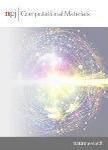版权所有:内蒙古大学图书馆 技术提供:维普资讯• 智图
内蒙古自治区呼和浩特市赛罕区大学西街235号 邮编: 010021

作者机构:School of Mechanical EngineeringGuizhou UniversityGuiyang 550025China Department of Computer Science and EngineeringUniversity of South CarolinaColumbiaSC 29201USA Key Laboratory of Advanced Manufacturing TechnologyMinistry of EducationGuizhou UniversityGuiyang 550025China Department of Mechanical EngineeringUniversity of South CarolinaColumbiaSC 29201USA
出 版 物:《npj Computational Materials》 (计算材料学(英文))
年 卷 期:2020年第6卷第1期
页 面:964-970页
核心收录:
学科分类:08[工学] 0805[工学-材料科学与工程(可授工学、理学学位)] 080502[工学-材料学]
基 金:This work as partially supported by the National Science Foundation under grant numbers:1940099,1905775,OIA-1655740,and SC EPSCoR GEAR Grant 19-GC02 and by DOE under grant number DE-SC0020272 The authors also acknowledge funding from the National Natural Science Foundation of China under grant number 51741101 This work is also partially supported by National Major Scientific and Technological Special Project of China under grant number 2018AAA0101803 also by Guizhou Province Science&Technology Plan Talent Program under grant number5788
摘 要:A major challenge in materials design is how to efficiently search the vast chemical design space to find the materials with desired *** effective strategy is to develop sampling algorithms that can exploit both explicit chemical knowledge and implicit composition rules embodied in the large materials ***,we propose a generative machine learning model(MatGAN)based on a generative adversarial network(GAN)for efficient generation of new hypothetical inorganic *** with materials from the ICSD database,our GAN model can generate hypothetical materials not existing in the training dataset,reaching a novelty of 92.53% when generating 2 million *** percentage of chemically valid(charge-neutral and electronegativitybalanced)samples out of all generated ones reaches 84.5% when generated by our GAN trained with such samples screened from ICSD,even though no such chemical rules are explicitly enforced in our GAN model,indicating its capability to learn implicit chemical composition rules to form *** algorithm is expected to be used to greatly expand the range of the design space for inverse design and large-scale computational screening of inorganic materials.